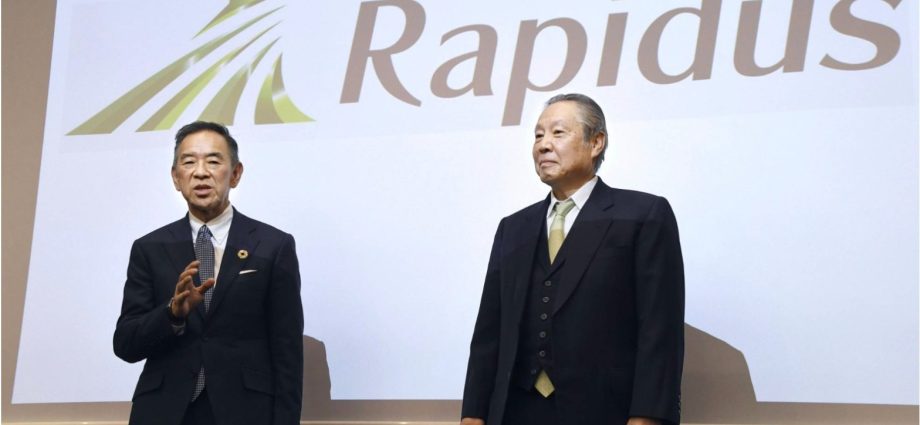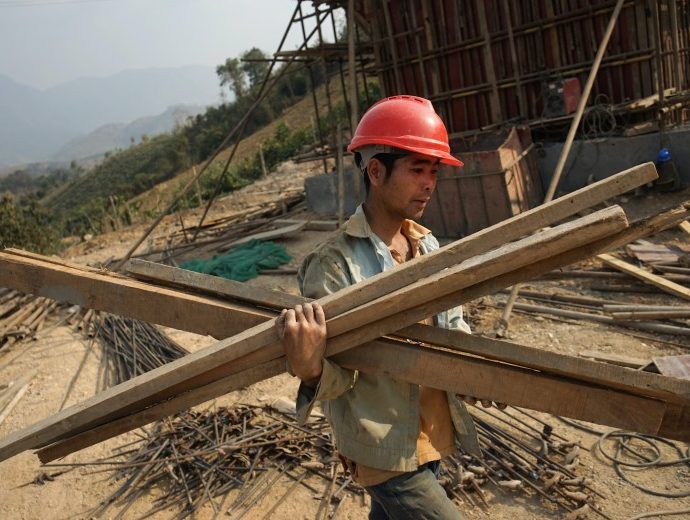Japan well on the way to chip-making’s vanguard
Developments at Rapidus and TSMC highlight Japan’s attempt to advance to the leading edge of semiconductor manufacturing. It is a comprehensive effort devoid of the financial, social and political difficulties seen in Germany, the US and China.
Rapidus, Japan’s advanced semiconductor production venture, will work on 1nm integrated circuit design with the University of Tokyo and the CEA-Leti research institute of France, according to Japanese media reports.
This should put it on a process technology development track converging with Intel.
TSMC, Taiwan’s industry-leading semiconductor foundry, is reported to be considering 3nm production in Kumamoto on Japan’s southwestern island of Kyushu. This points to step-by-step progress toward the ability to fabricate smartphone and AI processors.
By the end of this decade, these projects should give Japan some of the world’s most advanced semiconductor production facilities worldwide, filling a large gap in its manufacturing capability and greatly increasing the security of its electronics supply chain.
On October 10, French research institute CEA-Leti held its 17th annual Innovation Day in Tokyo.
At the event, CEA-Leti signed a Memorandum of Cooperation (MoC) with Japan’s Leading Edge Semiconductor Technology Center (LSTC) to launch “a long-term and sustainable collaboration in different advanced semiconductor fields, including materials, devices, processes, and technology” and “jointly define long-term R&D roadmaps.”
Rapidus chairman Tetsuro (Terry) Higashi was in attendance and about 30 meetings were held between CEA-Leti representatives and other Japanese electronics companies.
On November 17, Japan’s Nikkei newspaper reported that Rapidus and CEA-Leti will collaborate on the development of process technologies from 1.4nm to 1nm. Rapidus hopes to migrate from 2nm in 2027 to 1.4nm by 2030, with production at 1nm starting soon after that.

CEA-Leti is one of three research institutes affiliated with CEA Tech, the technology research branch of the French Alternative Energies and Atomic Energy Commission.
Leti focuses on micro- and nano-technologies applicable to computing, data processing and sensors including IC design, embedded software, silicon components, optics and photonics.
LSTC is an organization created under the auspices of Japan’s Ministry of Economy, Trade and Industry that conducts R&D for Rapidus.
Established in December 2022, it also includes the University of Tokyo, other Japanese universities and the nation’s Riken scientific research institute. Rapidus chairman Higashi – formerly chairman, president and CEO of Tokyo Electron – is LSTC’s executive chairman.
That same month, Rapidus signed a Memorandum of Cooperation with imec, the international nanoelectronics R&D center headquartered in Belgium, and announced a partnership with IBM to commercialize the latter’s 2nm process technology by 2027.
To this end, Rapidus has dispatched engineers to IBM’s Albany Nanotech Complex in New York and has started building a factory in Chitose, near Sapporo on Japan’s northern island of Hokkaido.
In April 2023, Rapidus joined imec’s Core Partner Program, which provides it with state-of-the-art production tools and allows it to conduct joint R&D with leading foundries, integrated semiconductor device makers, fabless IC design companies, and materials and equipment suppliers.
Other members of the program include TSMC, Sony Semiconductor, Intel, Micron, Samsung Electronics, SK Hynix, Western Digital and Qualcomm.
In June, imec announced an agreement for the installation and service of ASML’s new and most advanced high-NA EUV lithography system at its pilot line in Leuven, Belgium. This equipment is essential to the development of 2nm and 1nm IC fabrication processes.
Established in August 2022, Rapidus is supported by Kioxia (formerly Toshiba), a leading producer of NAND flash memory; Sony, the world’s top producer of image sensors; Toyota and its group semiconductor maker Denso; NTT, Japan’s leading telecom carrier; NEC, its largest telecom equipment maker; investment company Softbank; Mitsubishi UFJ, Japan’s largest bank; and the Japanese government.
On November 21, Bloomberg reported that TSMC is considering the construction of a third semiconductor factory in Japan that will use 3nm process technology, citing industry sources that requested anonymity.
The report indicates that TSMC will expand and upgrade its operations in Kumamoto for the rest of the decade.
TSMC’s first factory in Kumamoto, a joint venture with Sony and Denso, is now under construction and scheduled to start mass production in 2024 with 28nm, 22nm, 16nm and 12nm process technologies.

A second factory with 6nm capability should be completed by the end of 2026, according to the Japanese media.
No dates have been given for the third factory, but production starting in 2028 or 2029 would make sense. By then, 3nm process technology, now in production in Taiwan, will be well established. But in combination with Rapidus, it should give Japan a full range of logic foundry services down to 2nm this decade and 1nm in the 2030s.
Construction of TSMC’s first factory in Kumamoto is ahead of schedule, while its factory construction project in the US state of Arizona is said to be about a year behind schedule.
Taiwanese and Japanese work cultures are similar and Japan does not suffer from the disruptive union activism in the US.
TSMC also works with Japanese materials and equipment companies at its 3D IC packaging R&D center located in the science city of Tsukuba northeast of Tokyo. More than 20 Japanese companies are involved in the project.
In the memory IC sector, Micron Technology has announced plans to introduce EUV lithography in order to manufacture its next-generation 1-gamma DRAM at its Hiroshima factory starting in 2025.
CEO Sanjay Mehrotra notes that “Micron’s Hiroshima operations have been central to the development and production of several industry-leading technologies for memory over the past decade.” Micron currently makes its leading-edge 1-beta DRAM in Hiroshima.
Micron is the only producer of DRAM in Japan. Like Rapidus, TSMC and its partners Sony and Denso, Micron Japan receives subsidies from the Japanese government.
Together with Kioxia, which is ready to expand production of 3D NAND flash memory as the market emerges from its severe downturn, Micron provides Japan with first-rate memory IC production at high volume.
The emergence of a roadmap for the comprehensive development of Japan’s semiconductor industry stands in contrast to the situation in Germany, where the Federal Constitutional Court has ruled against the budgetary arrangements for subsidizing fab construction projects by Intel and TSMC.
What will happen to these projects is uncertain. What is certain is that Japan will keep forging ahead.
Follow this writer on Twitter: @ScottFo83517667





















